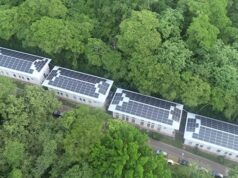
It’s no secret that the concerns towards the indoor air we breathe are growing, and as a result, people are doing something about it. That’s great news, because according to the Environmental Protection Agency (EPA), most Americans spend up to 90 percent of their time indoors. The EPA has also named indoor air quality as one of the top five health threats in the United States.
So why the increased apprehension towards indoor air quality (IAQ)?
The 2015 outbreak of Legionnaires Disease in New York City, which took 12 lives, was a wakeup call. But let’s look at evidence that affects us all. A groundbreaking study led by the Harvard T.H. Chan School of Public Health found that people who work in well-ventilated offices with below-average levels of indoor pollutants and carbon dioxide have 61 percent higher cognitive performance scores.
Appreciation for IAQ has now grown to a point where organizations like the United States Green Building Council (USGBC) are active in promoting it. The USGBC has introduced and promulgated its LEED, or Leadership in Energy and Environmental Design certification standard, which guides buildings’ design and construction toward sustainability.
A newer guideline is the WELL Building Standard, a system for measuring, certifying and monitoring the performance of building features that impact health and well-being. Administered by the International WELL Building Institute (IWBI), the program today includes more than 270 projects covering 57 million square feet registered or certified in 23 countries across six continents, including in the United States, China, Australia, France, Canada and the United Kingdom.
Where Do You Find the Cleanest Air?
Utilizing bipolar ionization technology, at least one company, AtmosAir, makes it possible for consumers to refresh their indoors with the same clean, pure air found only at the highest mountain elevations. The system features tubes that distribute negative and positive ions that then travel into our breathing space to break down allergens, bacteria and cancer-causing gaseous elements. Once these harmful particles drop out of our breathing range, the breathing environment is essentially left pollution free.
When Albert Einstein’s sister, Maja, suffered from tuberculosis, her stay in a hospital high in the Swiss Alps enabled her to recover completely. Einstein and a friend discovered that at high altitude the number of activated positive and negative ions in the air is much greater than elsewhere.
Providing indoor air like the clean, fresh air on a mountaintop, the aforementioned bipolar ionization process works to force small particles of volatile organic compounds, dust, and toxic mold to cling together, becoming heavy and dropping to the floor—again out of breathing range.
How Can We Best Purify Indoor Air?
An abundance of tests have shown bipolar ionization to be the most effective air purification system. That technology also demonstrates that contrary to conventional wisdom, indoor air can be made much cleaner than the air outside.
A video posted on the website of the global architecture, design and planning firm, Gensler, explains how the bipolar ionization system of AtmosAir purifies indoor air.
An early adopter of the technology behind bipolar ionization technology has been the athletic training community. That makes sense when you consider America’s enthusiasm for sports and the need for professional—and even college—teams to keep their athletes in peak shape. The Dallas Cowboys began using a bipolar system in its headquarters and training facility, and the University of Southern California installed the system in its John McKay Athletic Center.
In addition to professional and collegiate sports teams, indoor air purification systems using bipolar ionization are earning increased favor from architects, engineers and building management companies. Bipolar systems have been found to remove 95 percent of ultra-fine particles and up to 90 percent of volatile organic compounds (VOCs).
Additional Benefits of Bipolar Systems
A major advantage for these systems is that they also significantly reduce energy costs, since their purification technology requires less outside air to be pumped into a building.
Consider the 20,000-seat Staples Center in Los Angeles. A system was installed in 2012. In addition to reducing volatile organic compounds within the arena by 90 percent, the units have also substantially lowered outside air requirements by 50 percent, decreasing HVAC power demand by 21 percent.
It is good to know there is a clear answer to one of the world’s most pressing problems—the need for clean indoor air. I lead by the mantra, “breathing is believing.”
Steve Levine is President and CEO, Clean Air Group, Inc., Fairfield, Conn. He founded the company in 2004. Clean Air Group brings to market products and technologies that improve the quality of environments including the AtmosAir Solutions line of air purification products for commercial and residential use. Prior to Clean Air Group, Levine was President and CEO of Protective Alarms, the largest independent security company in Connecticut. In addition to his industry involvement, Levine has served as Chairman of The Pro Sports Challenge for the past 17 years. The Pro Sports Challenge is a fundraising event that has raised over $1 million to support the quality of life of developmentally disabled adults living at the Lower Fairfield Center, a state-run group home in Norwalk, Conn. Levine can be reached at (203) 335-3700 or by e-mail at slevine@atmosair.com.







